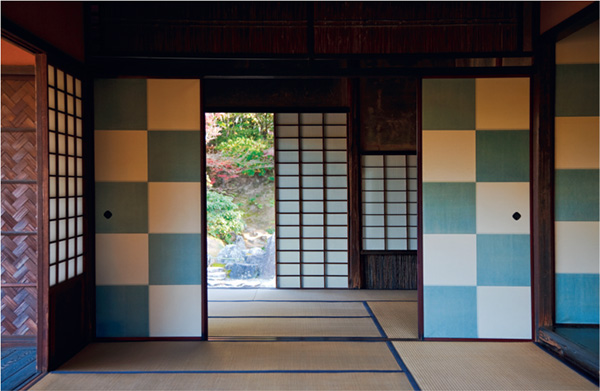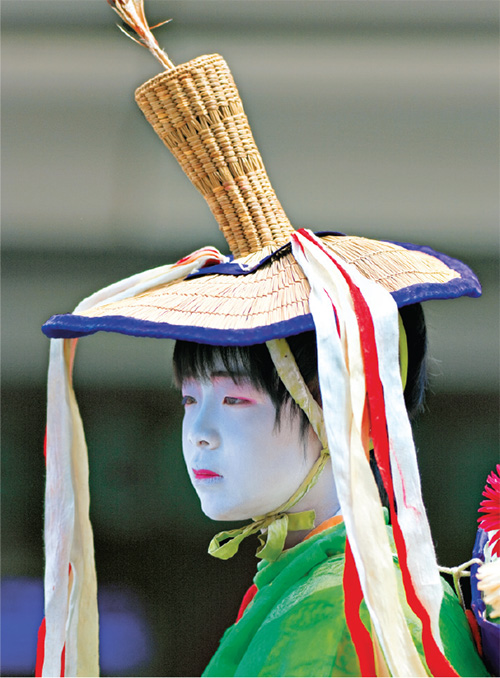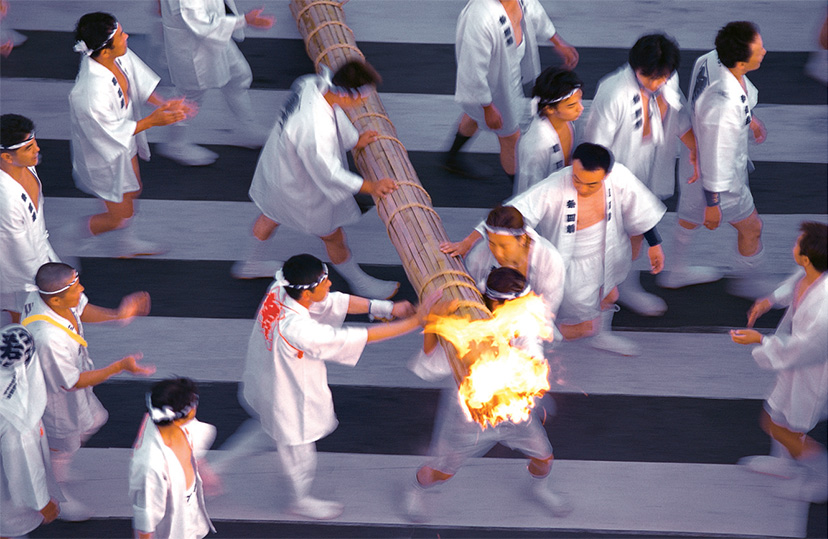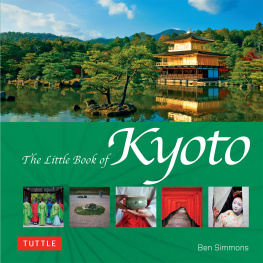
Katsura Imperial Villa tea pavilion.
The Little Book of Kyoto is a celebratory introduction to the city that is Japans eternal spiritual heart, with a unique cultural history as imperial capital for more than a thousand years. Words and images are woven together to illuminate a rich sampling of the amazing facets that make Kyoto, containing many World Heritage Sites and hundreds of National Treasures, one of the worlds richest treasure troves. To provide historical and modern perspectives, while offering strategies to navigate essential pathways from the Kamogawa River to the surrounding mountains, a series of fi fty essays are organized into four chapters covering the Spirit of Kyoto, Kyotos Imperial Legacy, Kyoto Highlights, and Exploring Kyoto. Veteran photojournalist Ben Simmons continues a journey of discovery begun more than twenty years ago, seeking creative angles and fresh insights to an endlessly compelling city. Compact enough to carry anywhere, this book is a fi ne companion for any Kyoto expedition, whether its a fi rst visit or for a deeper look into the ancient capital.

Torii gate tunnel on Mount Inari.

Hozu River excursion in Arashiyama.

Symbolic tatezuna sand cones at Kamigamo Shrine (left); Autumn tea at Shinnyo-do Temple (right).
The Little Book of
Kyoto

Ben Simmons

CHAPTER 1
THE SPIRIT OF KYOTO

A kannushi priest in ceremonial costume at Hirano Shrine.
From the excitement and pageantry of its plentiful festivals to the timeless Zen calm of its sacred temples, the spirit of Kyoto emanates from a rich heritage and deep pride as Japans imperial capital for more than a thousand years. Kyotos confidence in its unparalleled history and traditions is further enriched by the vital energy generated by ongoing education that flows steadily from the citys abundance of colleges, universities, training schools, and cultural centers. Kyotos dedicated teachers insure a resilient spirit and resurgent energy will ultimately achieve a crucial balance of historical legacy facing the challenges of modernity.
Kyotos ethos is reflected in the artful arrangement and detailed attention afforded every aspect in daily life: the fresh flowers at a neighborhood shrine, the elegant presentation of cuisine for both visual and culinary delight, the precise rituals of the citys legions of monks, gardeners, tea attendants, Shinto priests, and skilled craftspeople. Even shopping chores amidst Kyotos historical markets and generations-old shops can seem a spiritually enhanced adventure. The spirit of Kyoto nurtures its residents and inspires the Japanese people throughout the archipelago, while touching the lives of perceptive visitors from all over the world.
Festivals
Kyotos matsuri festivals are held throughout the year. Every month, nearly every week, and at times it seems on any day, there is a traditional matsuri or holiday celebration under way somewhere in the city. Kyoto festivals and special events are so plentiful that the monthly Kyoto Visitors Guide can hardly fit all the details into the magazines thirty pages. Kyotos most famous festival, the Gion Matsuri, was recently added to UNESCOs Intangible Cultural Heritage list. Begun as a purification ritual to ward off deadly plagues more than 700 years ago, the Gion Festival transforms the city for the entire month of July. Extensive preparations by craft guilds, merchant families, and neighborhood organizations proceed amidst performances of traditional music and theater, culminating in the Gion Matsuris two epic parade processions. Each of the towering hoko floats and richly adorned yama floats, with their strikingly attired attendants, are really too overwhelming to fully absorb before the next amazing display is pulled or carried into view.
Kyotos Aoi Matsuri, celebrated since the 6th century, is the worlds oldest festival and continues largely unchanged, a sedate procession of chaste elegance and period costume celebrating Heian culture. The Jidai Matsuri, Kyotos Procession of the Eras, begins with ceremonial services at sacred Heian Jingu Shrine, where the spirits of Heians two deified emperors are transferred to portable mikoshi shrines that are accompanied by marchers in traditional costumes from each historical era. The reverential and celebratory procession makes its circuitous way to the Imperial Palace before returning through Heian Jingus iconic towering torii gate.

The Ofune Hoko float during the Gion Ato-Matsuri Parade.

Participants in Gions Hanagasa Flower Hat Procession.

A performance of the Japanese biwa lute at Yasaka Shrine.

A chigo sacred child on horseback.

Musicians on a Gion Festival parade float on Shijo-dori Avenue.

A traditional dance with sensu folding fans at Heian Shrine.

A Gion Festival parade on Shijo-dori.

Boys in festival attire ride atop a yama pull-style float.

Young taiko drummers on parade.

Next page





























